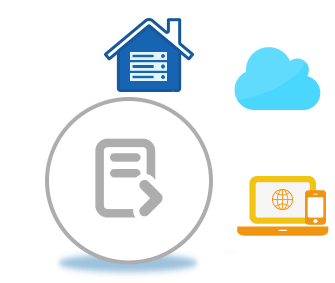Digitally Sign Powerpoint File Online via e-Signature App or using C++
Develop powerful C++ based Powerpoint document signing applications. Freely add digital signature into various documents including Powerpoint files online via app with instant download.
Add Digital Signature into Powerpoint Files Online using App
- Upload Powerpoint files to sign digitally
- Add text for signature or upload signature image
- Click the “Sign” button
- Download the signed Powerpoint file
Digitally Sign Powerpoint File via C++
- Load Powerpoint presentation
- Load PFX file using DigitalSignature
- Comment new digital signature using set_Comments
- Add digital signature using get_DigitalSignatures()->Add
- Save signed Powerpoint file
C++ Code : Add Digital Signature in Powerpoint File
Develop eSignature Application using C++
Need to develop C++ script or utility application to easily sign multiple Powerpoint files electronically? With
Aspose.Slides for C++
, child API of
Aspose.Total for C++
, any C++ developer can integrate the above API code to program e-Signing app for signatures across documents. Powerful C++ library for document signing, supports many popular formats including Powerpoint format.
Powerpoint e-Signature library for C++
There are options to install Aspose.Slides for C++ or Aspose.Total for C++ onto your system. Please choose one that resembles your needs and follow the step-by-step instructions:
- Install a NuGet Package . See Documentation
- Install the library using Package Manager Console within Visual Studio IDE
System Requirements
You can use this C++ library to develop software on Microsoft Windows, Linux and macOS operating systems:
- GCC >= 6.3.0 and Clang >= 3.9.1 are required for Linux
- Xcode >= 12.5.1, Clang and libc++ are required for macOS
If you develop software for Linux or macOS, please check information on additional library dependencies (fontconfig and mesa-glu open-source packages) in
Product Documentation
.
FAQs
- Can I use above C++ code in my application?Yes, you are welcome to download this code. One can easily develop a professional solution to add digital signature in Powerpoint file using C++. Use Aspose Powerpoint e-Sign API to develop high-level, platform independent software in C++.
- Is this document digital signing App work only on Windows?You have the flexibility to initiate document signing from any device, irrespective of the operating system it runs on, whether it be Windows, Linux, Mac OS, or Android. All that's required is a contemporary web browser and an active internet connection.
- Is it safe to use the online app to sign multiple Powerpoint documents?Of course! The output files generated through our service will be securely and automatically removed from our servers within a 24-hour timeframe. As a result, the download links associated with these files will cease to be functional after this period.
- What browser should to use App?You can use any modern web browser like Google Chrome, Firefox, Opera, or Safari for online Powerpoint document compression.
- How can I sign multiple Powerpoint files?Start by uploading one or more files you want to sign. You can either drag and drop your Powerpoint files or simply click inside the white area. Afterward, click the 'Sign' button, and our online esigning app will quickly process the uploaded files.
- How long does it take to sign the Powerpoint files?This e-signature application operates quickly, It may take a few seconds to upload the files and sign them.
Explore File eSignature Options with C++
What is POWERPOINT File Format?
PowerPoint is a widely used presentation software that offers various file formats to save and share presentations. Understanding the different file formats in PowerPoint is essential for compatibility, sharing, and maintaining the visual integrity of presentations.
The default file format in PowerPoint is PPT (PowerPoint Presentation). PPT files are compatible with older versions of PowerPoint but may have limitations in terms of compatibility with other software applications. However, with newer versions, the PPTX (PowerPoint Open XML Presentation) format has become more prevalent. PPTX offers several advantages, including smaller file sizes, improved data recovery, and enhanced compatibility with other programs.
In addition to PPT and PPTX, PowerPoint supports other file formats like PDF (Portable Document Format). PDF files are widely used for sharing and publishing presentations because they preserve the formatting, layout, and graphics of the original slides, ensuring consistent viewing across different devices and platforms.
PowerPoint also allows saving presentations in formats like POT (PowerPoint Template) and POTX (PowerPoint Open XML Template). These formats serve as templates for creating new presentations with predefined styles, layouts, and designs.
For compatibility with other software applications, PowerPoint supports formats like ODP (OpenDocument Presentation) and HTML (Hypertext Markup Language). ODP files are open-source and can be used with software like LibreOffice and Google Slides. HTML files are web-compatible, allowing presentations to be displayed in web browsers.




